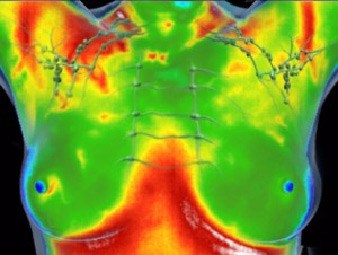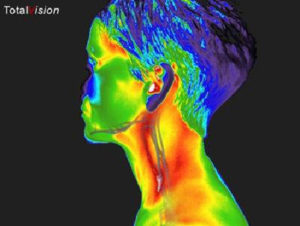Women’s Health Studies
For A Healthier Lifestyle
Thermography is a safe method of revealing the early signs of developing cancerous tissue masses, cardio-vascular disease and reduced heart function.
This advanced technology is the most efficient method of detecting inflammation in the arteries as well as the breast, offering the valuable life-saving benefit of early detection and thermography substantially increases for the possibilities of prevention.
 Understanding the difference
Understanding the difference
Thermography and Mammography are very different. One cannot replace the other, but together we may have a chance to realize a new and truly visionary way to make positive changes and reduce the feared risk of breast cancer for the benefit of all women.
Thermography is not a replacement for mammography. Nobody would suggest that if a Woman has a thermogram she shouldn’t have a mammogram. We must assume that women, if given enough accurate information, are capable of making their own decisions. More women are avoiding mammography, – not because they are having thermography, but because of personal experience and the associated risks demonstrated over the past two decades with Mammography including exposure to ionizing radiation and the very high rate of “false positives” and over diagnosis of breast cancer
 Heart Disease – Although heart disease may often be thought of as a problem for men, heart disease is the most common cause of death for women in the United States. One challenge is that some heart disease symptoms in women may be different from those in men. A woman is actually ten times more likely to experience heart disease than breast cancer. Women with diabetes are at greater risk of heart disease than are men with diabetes. Guidelines from the American Heart Association (AHA) urge women to be more aggressive about cutting their cardiovascular disease risk. It’s time women give more attention to the prevention of heart disease, and thermography can help.
Heart Disease – Although heart disease may often be thought of as a problem for men, heart disease is the most common cause of death for women in the United States. One challenge is that some heart disease symptoms in women may be different from those in men. A woman is actually ten times more likely to experience heart disease than breast cancer. Women with diabetes are at greater risk of heart disease than are men with diabetes. Guidelines from the American Heart Association (AHA) urge women to be more aggressive about cutting their cardiovascular disease risk. It’s time women give more attention to the prevention of heart disease, and thermography can help.
Inflammation has proven to be the common factor in both diseases. It was previously believed to be a plumbing problem with the perception of clogged arteries as the culprit. It is now known that inflammation inside the wall of the arteries is actually the problem in 70% of all coronary artery disease. Even though both health risks are somewhat related to family history, the genetic factor is not the primary cause, which means that both diseases are preventable. The challenge is to have access to information that offers earlier warnings and this is where having a thermography imaging study can help.
Women’s Image Health Studies
 Full Body Thermography Study
Full Body Thermography Study
Head-to-Toe Full Body Thermographic imaging of the head, neck, thyroid, chest, full Breast Health study, abdomen, cervical neck, upper (thoracic) back, lower back (lumbar-sacral regions), full torso, legs, knees, feet, arms and hands. This study is used as a baseline.- Half Body Thermography Study
Often referred to as a “Core” health study, this thermography study is from the head to the pelvic region and includes thermographic imaging of the head, neck, thyroid, breast (anterior, lateral, oblique and inferior views), abdomen, cervical neck, upper back, lower back and full torso imaging - Breast-Only Health Study
Thermographic imaging of breast area. Includes anterior, oblique, lateral and inferior views. Also includes upper back imaging. Initial imaging is followed up in 90 days to establish stable thermal patterns
